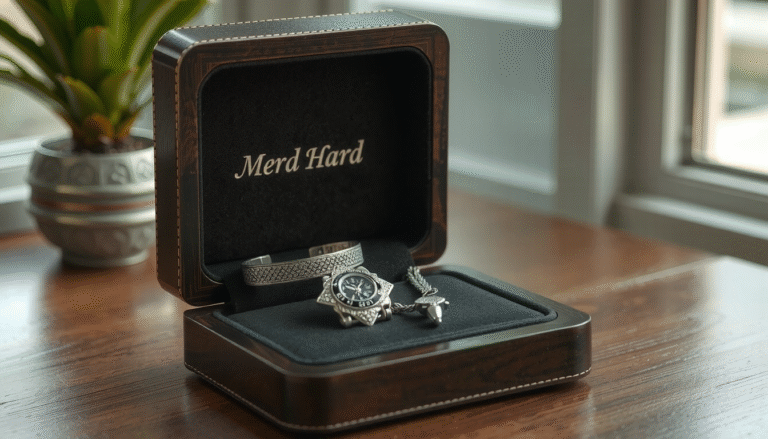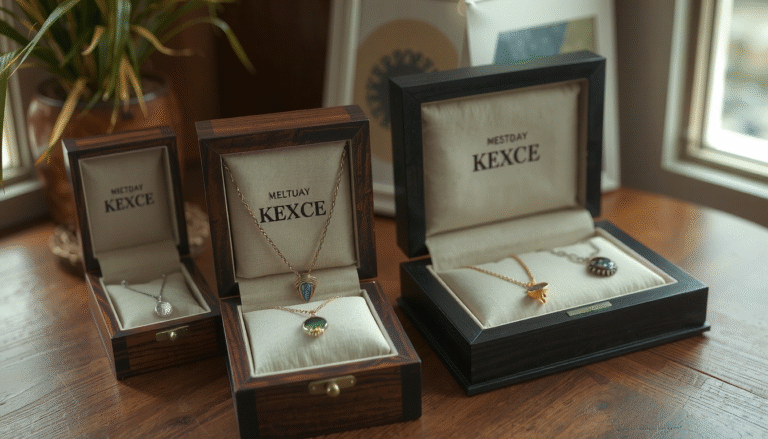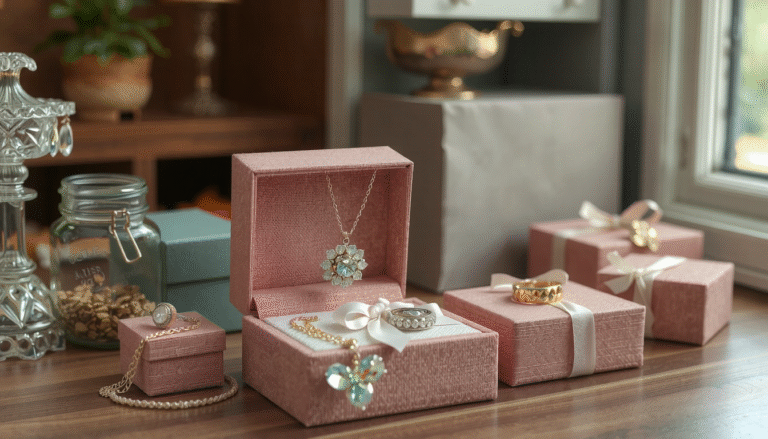An expansive panorama of glossy black, intricate gold, and shimmering mother-of-pearl is visible only from the object you are holding. A black lacquer Chinese jewelry box is not simply a place to stash your precious possessions. It is a testament to cultural history. It’s a beautiful piece of design but is still completely functional. And it starts its long journey as an heirloom.
This guide is all about the incredible legacy of these fabulous boxes. We will cover their history and the master craftsmen who make them. We will introduce you to their beautiful symbols, and offer you the best professional tips on selecting and caring for your own piece.
In Lacquer, a Heritage: The Wonderful History of the Box
The black lacquer Chinese jewelry box story is inextricable from the long-standing Chinese lacquerware tradition itself. This is not a newly-introduced technology but rather a preserved craft and creative art that has existed for millennia.
From Ancient Beginnings to Commodity of the World
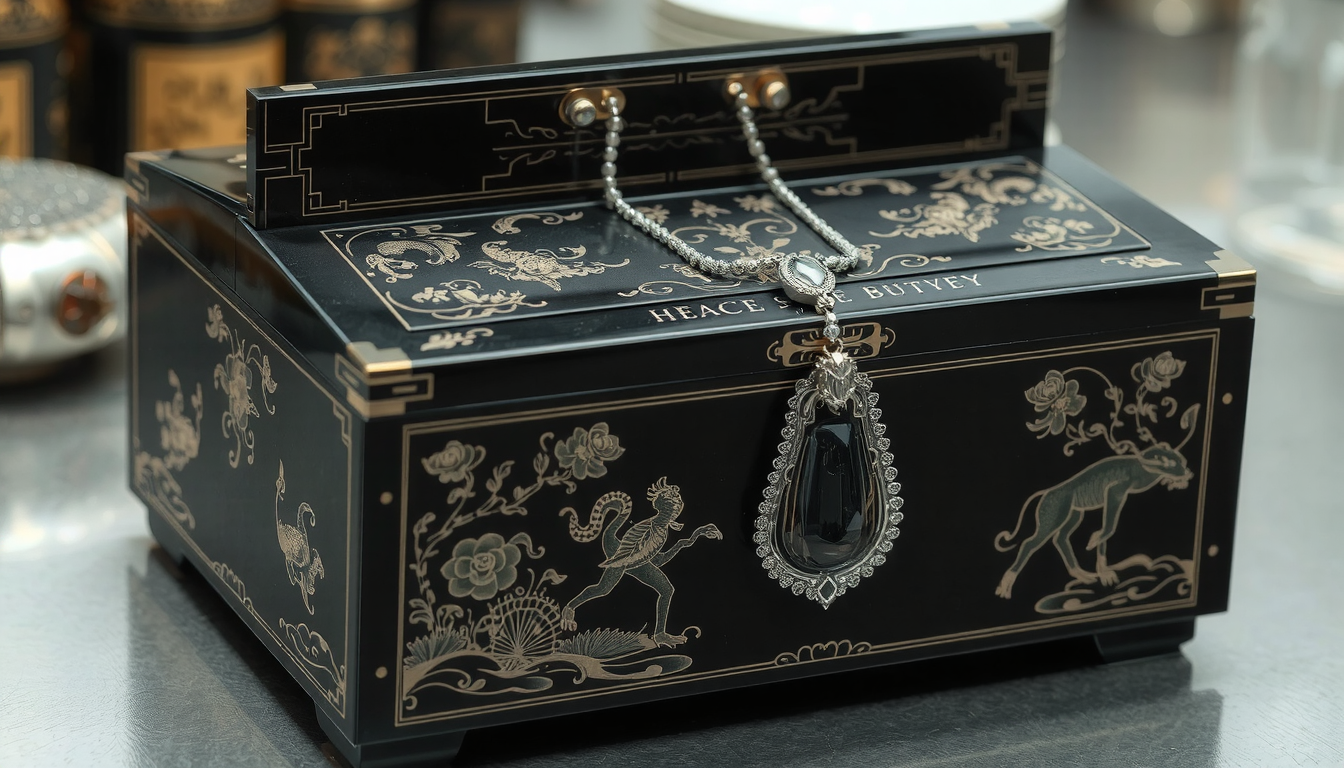 The root of lacquer craftsmanship can be tracked as far back as the Shang Dynasty (c. 1600–1046 BC). Some items are not only cool, durable, and beautiful, but they are also well-preserved showcases of the material’s exceptional properties. The oily substance comes from the sap of the Toxicodendron vernicifluum tree, known as the lacquer tree. People widely spoke about it as it offered both protection and beauty.
The root of lacquer craftsmanship can be tracked as far back as the Shang Dynasty (c. 1600–1046 BC). Some items are not only cool, durable, and beautiful, but they are also well-preserved showcases of the material’s exceptional properties. The oily substance comes from the sap of the Toxicodendron vernicifluum tree, known as the lacquer tree. People widely spoke about it as it offered both protection and beauty.
Initially, lacquerware was just a tool for utilitarian purposes. But it eventually evolved into a powerful symbol of refinement and status. Lacquer reached its height as an art form in the Ming (1368–1644) and Qing (1644-1912) dynasties. During the time of the China Trade when these magnificent boxes went to Europe and America, they were seen as the zenith of exotic luxury and art.
The Mastery of Making: The Creation of the Black Lacquer Jewelry Box
The process of crafting an authentic black lacquer Chinese jewelry box is a showcase for a true artisan’s eros and patience. The majestic, almost liquid, surface and meticulous engravings of the motifs are due to the multi-stage processing, which is, at the same time, very painstaking and time-consuming. It may take several months to create one.
A Sequence of Patience and Precision
-
The Base Wood: The process initiates from a solid wood core, which is usually sourced from fine-grained woods like pine or camphor. The wood undergoes careful shaping, sanding, and preparation in order to provide a fully smooth and stable base. It has to be absolutely free of any faults or defects that would later manifest on the lacquer surface.
-
The Lacquer Application: This is the most labor-intensive process. The craftsman will apply dozens, sometimes over a hundred, very thin layers of raw lacquer. Between each application, the box must cure in a carefully controlled warm and humid environment. This is the necessary process that lets the lacquer harden properly.
-
The Polishing: After several layers have cured, the surface is polished by hand with fine abrasives. This cycle of applying, curing, and polishing repeats until the craftsman achieves the signature deep, lustrous finish. The finished product seems to be without a bottom.
-
The Decoration: The final artistic stage begins after the complete black lacquer surface has been achieved. This is where the box really takes form. The different methods of decoration are, for example, very delicate hand-painting, intricate inlay work, or even careful carving.
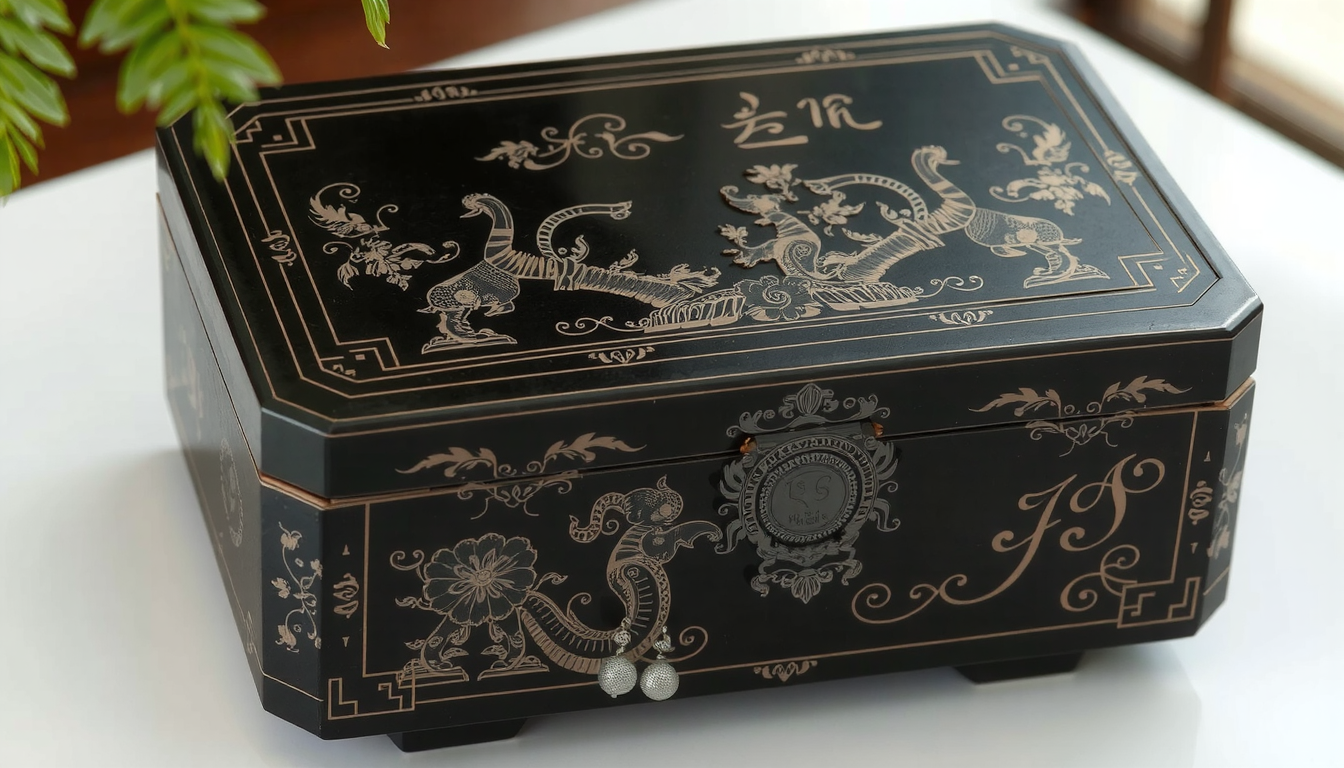
Decoding the Artistry: Symbolism in Chinese Jewelry Box Designs
The patterns that embellish a black lacquer Chinese jewelry box are hardly ever just decorative. Each element thus forms an artistic language. The decorative motifs represent centuries of traditional culture, well-wishing, and philosophical ideas. To learn these symbols is to make the box not only a lovely object but also a story with meaning.
Beyond Decoration: Interpreting the Symbols
The jewelry boxes’ plethora of motifs found in collector marketplaces is often the bearer of particular meaning attached to different cultures.
| Symbol/Motif | Meaning & Significance |
|---|---|
| Dragons and Phoenixes | The ultimate symbols of power and fortune. The dragon is the emperor and male (yang) energy, while the phoenix is the empress and female (yin) energy. Together, they signify a perfect, harmonious union and imperial blessing. |
| Peonies and Plum Blossoms | The peony, often called the “king of flowers,” is a symbol of wealth, love, honor, and feminine beauty. The plum blossom is a flower that blooms in winter and symbolizes resilience, perseverance, courage, and hope. |
| Cranes and Bats | The crane is a bird considered sacred and a bird that is often associated with longevity, wisdom, and nobility. The bat is a surprising symbol of good fortune because its name in Chinese (fú) is a homophone for the word that means luck and happiness. |
| Landscapes (Shanshui) | Shanshui paintings, which depict mountains and water, are more than just pretty landscapes. They embody a philosophical notion of the mutual relationship between humans and the natural landscape, which is often Daoist or Buddhist ideas of balance and tranquility. |
| Courtly Scenes | These boxes often illustrate beautiful ladies in pavilions in the garden, scholars studying, or joyous celebrations. These scenes give viewers a glimpse into the fantasy life of the imperial court or a retelling of the famous Chinese literature and legends. |
Expert Wisdom: Choosing Your Black Lacquer Chinese Jewelry Box
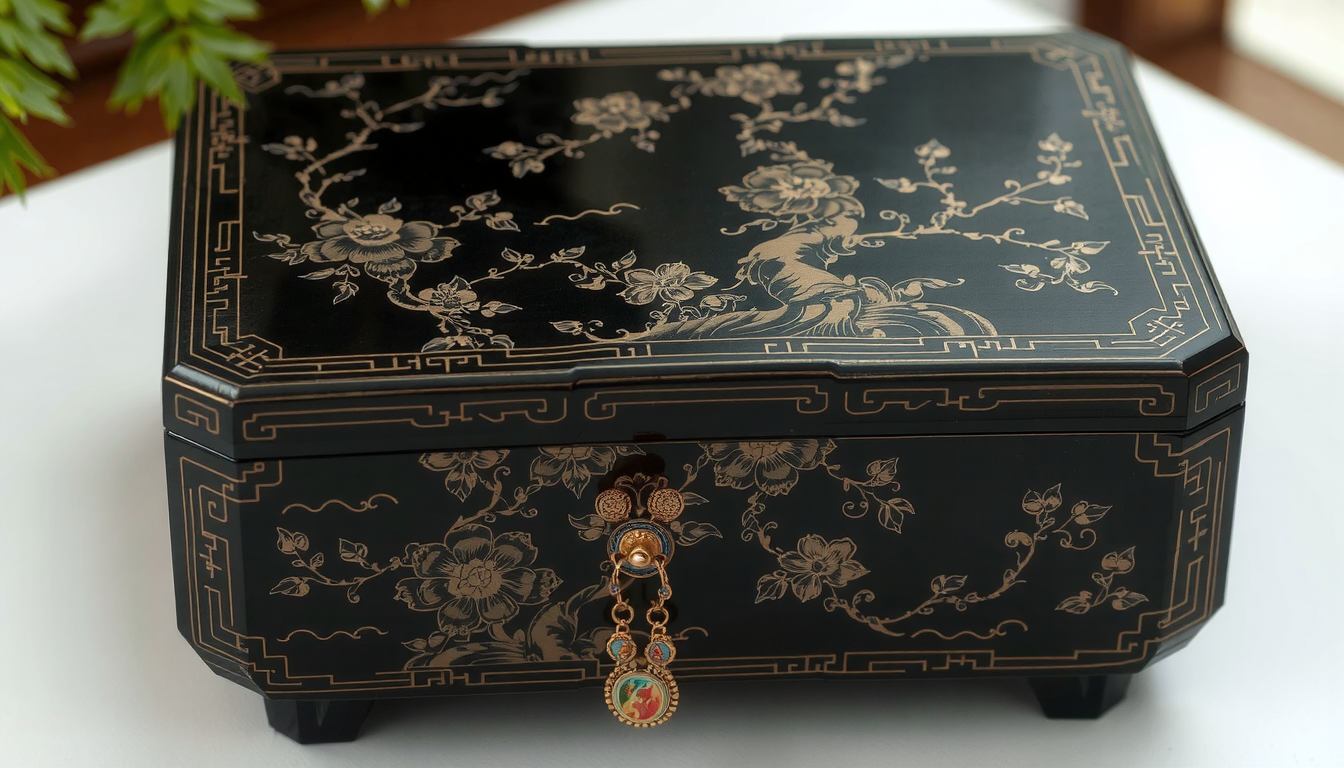 If you are looking for a vintage heirloom or a masterfully crafted new one, being able to tell the difference is crucial. A good eye can distinguish a work of art from an imitation.
If you are looking for a vintage heirloom or a masterfully crafted new one, being able to tell the difference is crucial. A good eye can distinguish a work of art from an imitation.
What to Find: Indicators of Quality
- The Lacquer Finish: An ornament of top quality comes with a deep, smooth lacquer that reveals a warm and rich gloss. It shouldn’t appear harsh or glassy. See the depth and clarity for yourself. Keep an eye out for modern high-gloss sprays that convey a superficial feel and lack the warmth of traditional lacquer.
- The Inlay Work: For example, if the box features a mother-of-pearl or soapstone inlay, the pieces should be cut with great skill and set impeccably smooth with the lacquer surface. It will be close to invisible to the touch if you move your finger across a high-quality inlay while poor work will feel rough with gaps or raised edges.
- Hardware and Construction: Inspect the hinges, clasps, and drawer pulls. On vintage or better items, they’re often solid, unlacquered brass that obtains a natural patina. They have to function smoothly and be properly attached. The box’s joinery must exhibit the tight, clean corners that are typical of quality work.
- Interior: The condition of the interior lining is very important. It usually is a patterned silk brocade or soft felt. Look for stains, signs of wear, such as tears, or musty odors that have invaded its edges. A box stored in good condition, that has the original mirror and trays, will not only bring joy to the owner but will also significantly increase its intrinsic value.
Vintage vs Modern: The Art of Distinction
Identifying an antique from a modern one calls for a careful assessment of the components. For instance, Contemporary Asian jewelry boxes are the best representatives for the marriage between old design and modern functionality. They ensure great quality and stability for daily activities. Vintage is the elusive keeper of a bygone era long gone.
| Feature | Vintage / Antique | Modern Reproduction |
|---|---|---|
| Patina | There are minimal signs of wear and tear that come with age, for instance, a little bit of wear at the corners, lacquer that has mellowed out, and a natural aged patina on brass hardware. | All finish is of the same color, colorful, and shiny hardware. May possibly be “distressed” artificially but most of the time it looks unconvincing. |
| Lacquer Depth | The finish demonstrates visible thickness, and the surface has a dull natural gloss that results from the polishing of countless layers. | Often it ends up being just a thin, machine-applied layer of high-gloss lacquer that is either too bright or too thin or too shiny or plastic-like. |
| Inlay Materials | The pieces of mother-of-pearl may differ in hue and thickness as they are natural products. The soapstone carvings are generally more elaborate. | The inlay could be thinner, look more uniform, or sometimes be made of synthetic materials such as plastic. |
| Weight & Wood | The item usually feels heavier because it is built from solid woods and has thicker lacquer coatings. | It can feel lighter, especially if some composite wood (MDF) is used as a core. |
Cherishing your Jewel: Advice on Jewelry Box Maintenance
A black lacquer Chinese jewelry box is an incredibly tough item. However, its delicate surface requires careful maintenance to last for years to come. As far as our experience is concerned, avoiding harsh chemicals and extreme conditions is the main factor to consider in the preservation process.
Simple Care for Durable Elegance
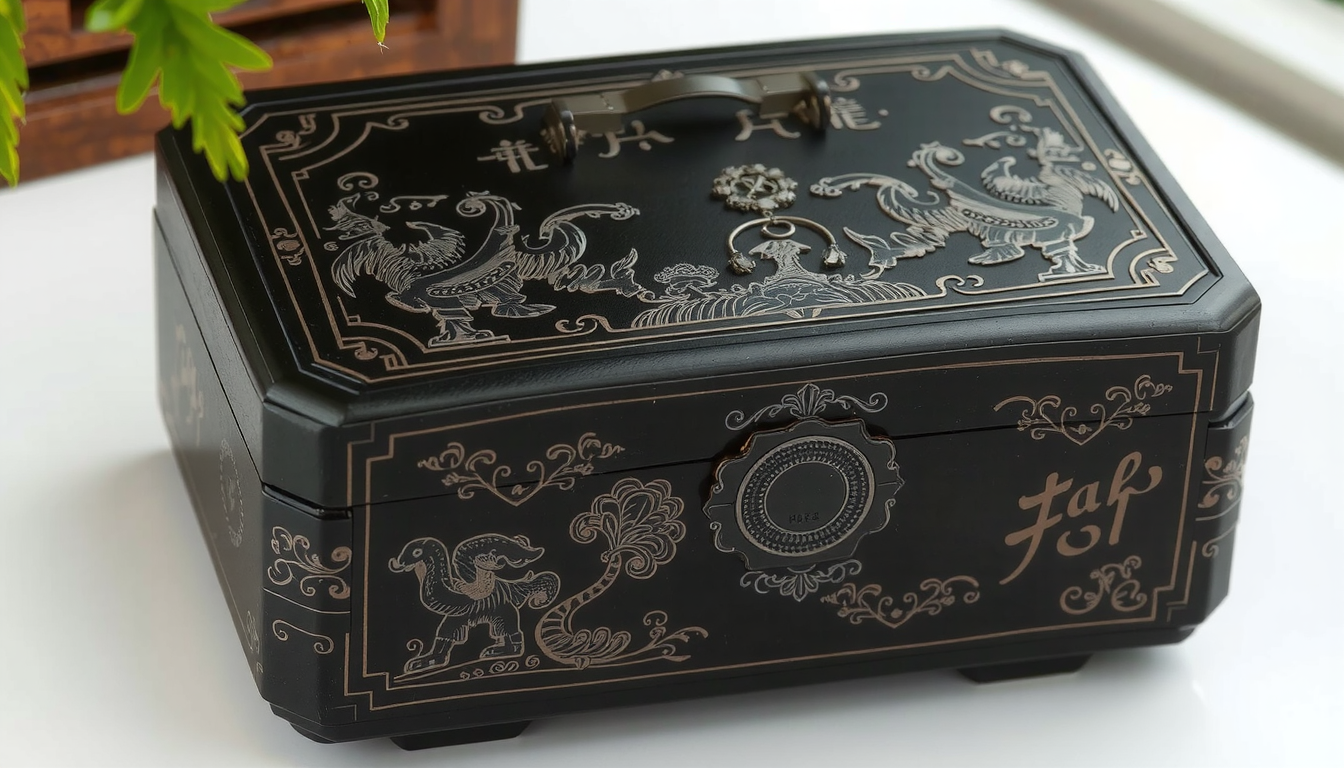
- Dusting: Use a microfiber cloth that is both dry and soft. Don’t use anything else like feather dusters or rough cloths. These can easily catch on the edges of inlays or leave tiny scratches on the lacquer.
- Cleaning: For fingerprints or smudges, use a soft cloth that has only been slightly dampened with water. Gently wipe the area and right after that, use a clean and dry microfiber cloth. Never use furniture polish, wax, or chemical solvents. They will permanently damage the lacquer finish.
- Environment: Keep the box away from direct sunlight, as it will fade the colors, and it can also lead the lacquer to become brittle. Do not put it near radiators, vents, or in places with rapid changes in temperature and humidity. This can cause the wood underneath to expand and contract, thus leading to cracks.
- Usage: Use care when dealing with the box so that you do not drop it or bang it against hard surfaces. This is the easiest way to chip the delicate lacquer edges and corners.
Locate Your Ideal Piece
The first step in the process is to find an authentic black lacquer Chinese jewelry box. You can either opt for the antique or the new version; they are both available at dedicated jewelry box suppliers, whose collections alone are a worthwhile investment in quality, authenticity, and beauty that lasts through time.
An Artistic Addition to Your Home
In the final analysis, a black lacquer Chinese jewelry box represents not only a smart fusion of function and form but also a deep cultural heritage. It’s more than just a place to store your jewelry. It’s a repository of your personal stories. It is a future heirloom that carries inside its lacquered layers a whole world.
Questions People Also Ask (FAQ)
What is the difference between Chinese and Japanese lacquer boxes?
Both are wonderful crafts, and their art has often been interrelated, but Chinese lacquerware is characterized by bold, elaborate inlay with mother-of-pearl, soapstone, and jade. It often features symbolic paintings of figures and landscapes. Maki-e, a Japanese style, is well known for using gold and silver powders which are sprinkled onto wet lacquer. These make beautiful minimalist or nature motifs that are often more intricate.
Is a vintage black lacquer Chinese jewelry box a good investment?
Well, if you are talking about antique or vintage boxes that are of high quality and in excellent condition, yes, they can be a safe investment. Being one-of-a-kind artists’ creations, their value is determined chiefly by age, condition, quality of the craftsmanship, and rarity. For many owners, however, they are mostly valued for the beauty that they possess and for the historical weight that they are carrying.
What are the materials that are most commonly used with inlay on these boxes?
For quite some time now, mother-of-pearl has been the most sought-after and traditional material used for inlay. In terms of appearance, it is the shimmery iridescent part that contrasts effectively with the black lacquer. As for the carvings of the soapstone, they are colorful and diverse in their geometrical patterns representing iconic figures, floral designs, and structures. It is worth noting that very few and high-end antique pieces might come with such luxurious materials as jade, coral, or (before the ban) ivory.
What should I do if a small chip occurs in my lacquer jewelry box?
In fixing the true lacquer, skills highly specialized are required. It would be best to consider consulting a professional art or furniture conservator before you take on any valuable or antique piece. Using modern glues or fillers for a home repair attempt often devalues the item and sometimes it leads to irreparable damage.
Why is black the most common color for these jewelry boxes?
The black lacquer gives the craftsman a very dramatic, high-contrast background to work with. The art of hand-painting and iridescent inlay flourished in this medium, showing their true colors. It immediately creates a sense of depth, elegance, and grandeur. Although red is also used (such as in Cinnabar), and gold is a possibility, the classic appeal of black is what makes it so popular and enduring.


